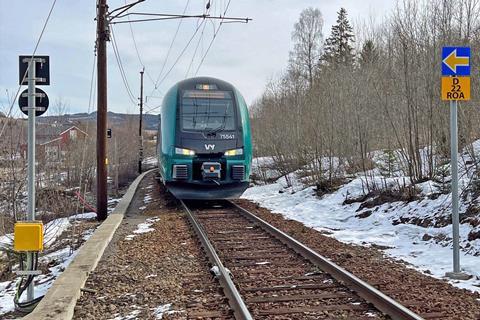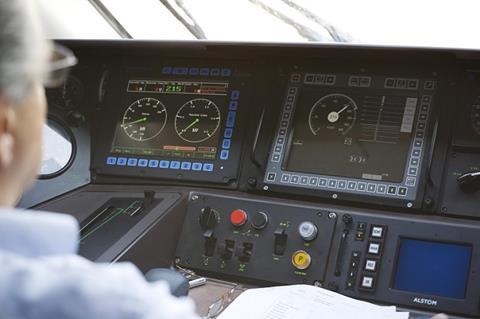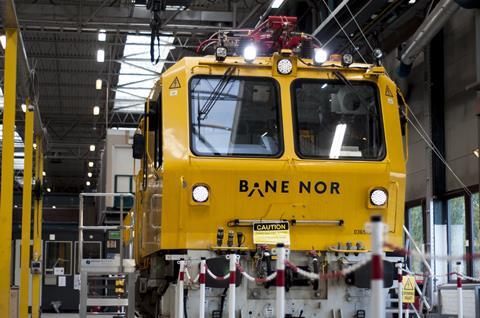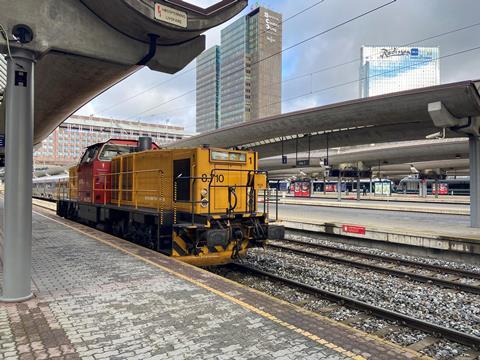
NORWAY: Citing global supply problems and delays to the retrofitting of trains, Bane Nor has postponed the planned launch of ERTMS on its first lines.
Under the infrastructure manager’s €3bn programme to resignal the entire national network, ETCS Level 2 operation had been scheduled to start on the 500 km northern section of the Nordlandsbanan between Grong and Bodø on October 31 2022, followed by the Roa – Gjøvik line north of Oslo.

Unveiling a revised national signalling plan, Executive Vice President for Operations & Technology Sverre Kjenne said the likely start date was now November 2023 for the Gjøvikbanan and ‘towards the end of 2024’ for the Nordlandsbanan.
‘We are working closely with the supplier to get an overview of how quickly they can retrofit the trains’, he explained. ‘We must ensure that we have enough trains to give passengers a good train offer when we adopt the new signalling system.’
Extensive testing
Bane Nor and its suppliers — Siemens, Thales and Alstom — have been carrying out extensive testing of ERTMS in recent months, including both laboratory tests and trials on the pilot section of the Roabanan between Roa and Honefoss. However, Kjenne reported that ‘through testing, it has recently become clear that we would not be sufficiently ready to use ERTMS on the first two sections as originally planned’.
‘We are doing something that has not been done before’, he emphasised. ‘With this type of development project, there are many challenges that must be dealt with along the way.’
As well as modifications to the infrastructure and rolling stock, the ERTMS programme requires the development of new software. More than 6 000 railway employees will need to be trained to operate and maintain the new systems.

Kjenne confirmed that ‘the project is well on its way, with new ICT systems, large quantities of signalling equipment installed in and along the track, and the first upgraded trains are now back in traffic.
‘At the same time, we have challenges in keeping to the timescale as originally planned. The global supply situation continues to cause uncertainty, as it is more difficult to obtain the parts and components that we need. The situation seems to persist, and is a risk we must deal with in the future as well. We are following the supply situation closely. Among other things, it is important that our suppliers are able to equip themselves to increase production in the future.’
Knock-on consequences
Despite the delays, Kjenne said Bane Nor would continue to prioritise the Roa – Gjøvik and Grong – Bodø routes for the first ETCS deployments, noting that the signalling on these sections was in the greatest need of renewal. ‘It is also important that we test and gain experience on simpler sections, such as the Gjøvikbanan, before we move on to more complicated and congested areas, such as Oslo S and the Vestfoldbanan.’

The revised national signalling plan describes the proposed sequence for the introduction of ERTMS across the network, although Kenne said Bane Nor was still working to get an overview of all the consequences of the delay. It was already clear that it would not be possible to start ETCS operation on the Bergen line in 2023 or the Røros and Solør lines in 2024 as initially envisaged. These sections would not switch to the new signalling system before 2025 at the earliest, he estimated.
However, he reiterated that ‘we are all keen to get the new signalling in place as soon as possible, so we can get more trains on the route and a smoother flow of traffic’.

















